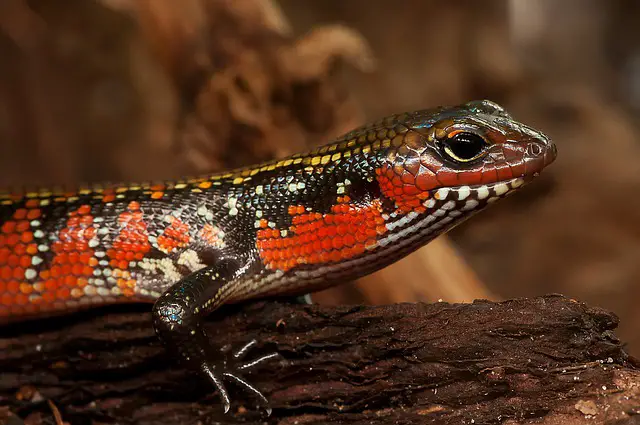There is a lot of mystery surrounding pink tongue skinks. Some people believe that they are diurnal, while others think that they are nocturnal. So what is the truth? Are pink tongue skinks diurnal or nocturnal? In this blog post, we will explore the natural habits of these unique lizards and find out once and for all if they are active during the day or night.
Are pink tongue skinks diurnal or nocturnal animals in the wild?
Before we answer the question of whether or not pink tongue skinks are diurnal or nocturnal animals, it’s important to understand what these terms mean.
Diurnal animals are typically active during the day and inactive at night. Nocturnal animals, on the other hand, are generally more active at night and sleep during the day.
With that said, there is some diversity among pink tongue skinks in terms of their activity levels. Some individuals may be more diurnal while others may be more nocturnal.
However, overall, pink tongue skinks tend to be more active at night than during the day. This is likely because they are native to tropical areas where it is typically much cooler at night than during the day.
As a result, they prefer to spend the majority of their time in the cooler hours of the evening and nighttime hours.
Are pink tongue skinks diurnal or nocturnal animals? in captivity
In captivity, however, pink tongue skinks may adopt a different schedule depending on their owner’s schedule.
If their owner is up and about during the night, the skink may become more active then. Conversely, if their owner is mostly active during the day, the skink may adjust its schedule to match.
Ultimately, pink tongue skinks are flexible creatures that can adapt to a variety of schedules.
What kind of habitat do Pink Tongue Skinks live in the wild and in captivity and what is their diet like?
In the wild, they typically live in humid rainforests near water sources, such as creeks or rivers. They are also often found in areas with lots of trees and vegetation, as they enjoy basking in the sun.
Pink Tongue Skinks are semi-arboreal, meaning they spend part of their time in trees. In captivity, Pink Tongue Skinks should be kept in enclosures that mimic their natural habitat as closely as possible.
This means providing them with plenty of hiding places, plants, and branches to climb on. They should also have a water bowl for bathing and drinking.
As for diet, Pink Tongue Skinks are omnivorous and eat both plants and insects. In the wild, their diet consists mostly of fruits, vegetables, and small invertebrates such as crickets or worms.
Captive Pink Tongue Skinks can be fed a variety of commercial lizard foods, as well as fresh fruits and vegetables.
How can you care for a pink tongue skink as a pet owner, and what are the potential dangers of keeping them as pets?
In the wild, these lizards can grow to be up to two feet long, but captive-bred skinks are typically smaller. These lizards are shy by nature and can be easily scared, so it is important to handle them gently and provide them with plenty of hiding places.
Pink tongue skinks are also very active and need a large enclosure that includes climbing branches, as well as a basking area with a warm light.
These lizards are omnivorous, so their diet should include both insects and vegetables.
However, it is important to avoid overfeeding, as pink tongue skinks are prone to obesity. potential dangers of keeping them as pets? While pink tongue skinks make interesting and unique pets, there are some potential risks associated with keeping them.
- Firstly, these lizards can carry salmonella bacteria, which can cause food poisoning in humans.
- Secondly, their sharp claws can cause scratches or puncture wounds if they feel threatened.
- Finally, pink tongue skinks require special care and a warm environment, so they may not be suitable for all pet owners.
What is the lifespan of a pink tongue skink, and how can you tell when it’s time to say goodbye to your pet lizard friend?
The lifespan of a pink tongue skink can vary depending on the individual. In captivity, they typically live for 10-12 years, but in the wild, their life expectancy is generally shorter.
There are several factors that can influence a skink’s lifespan, such as diet, housing, and care. As pets, they require a diet that is high in calcium and low in fat, as well as regular access to UVB light.
They also need a spacious enclosure that is properly ventilated and has a temperature gradient so they can regulate their own body temperature.
When provided with the proper care, pink tongue skinks can make wonderful companions. However, their relatively short lifespan means that they are not a pet for everyone. If you’re considering adding a skink to your family, be sure to do your research and be prepared for the possibility of saying goodbye sooner than you might expect.




